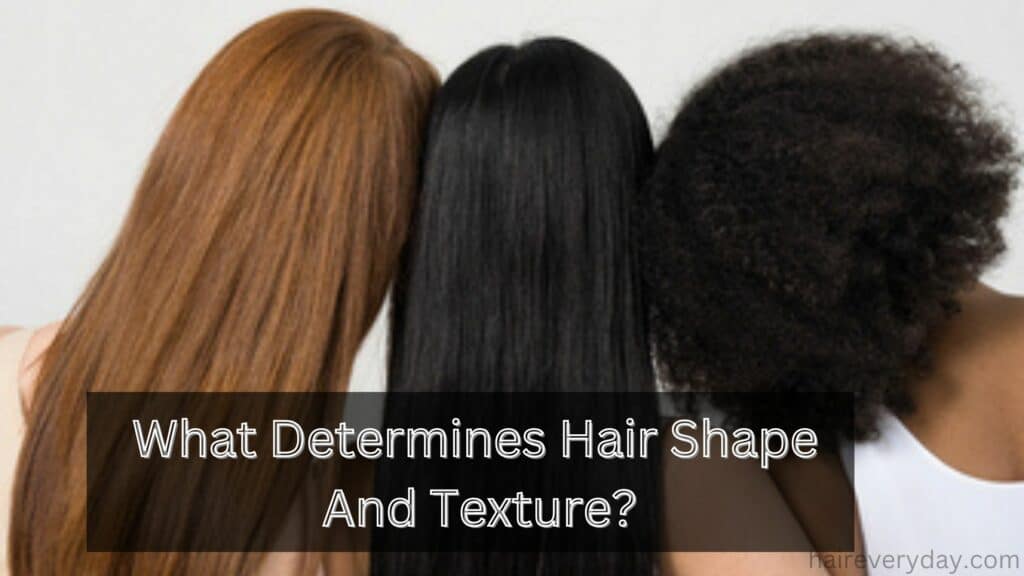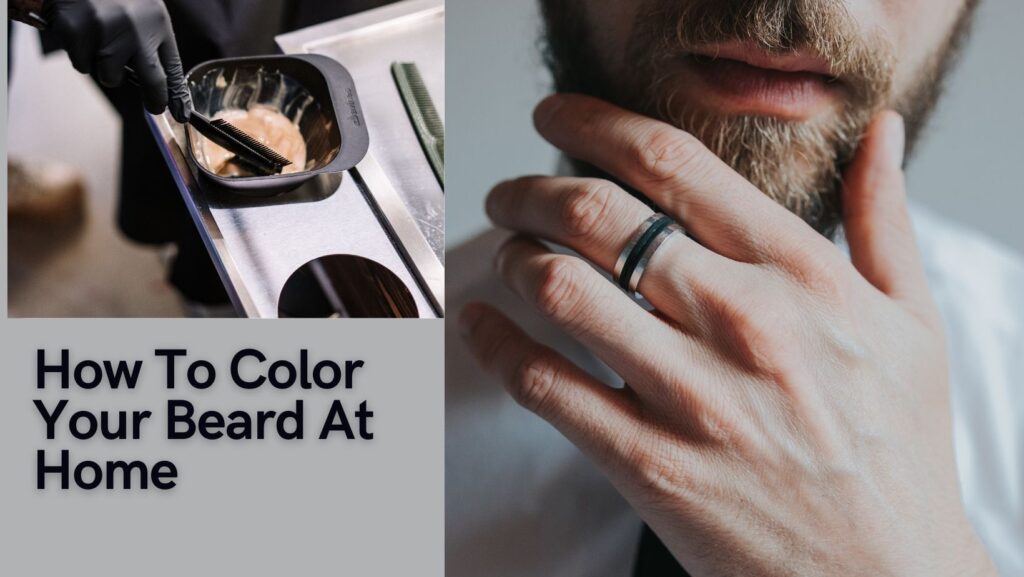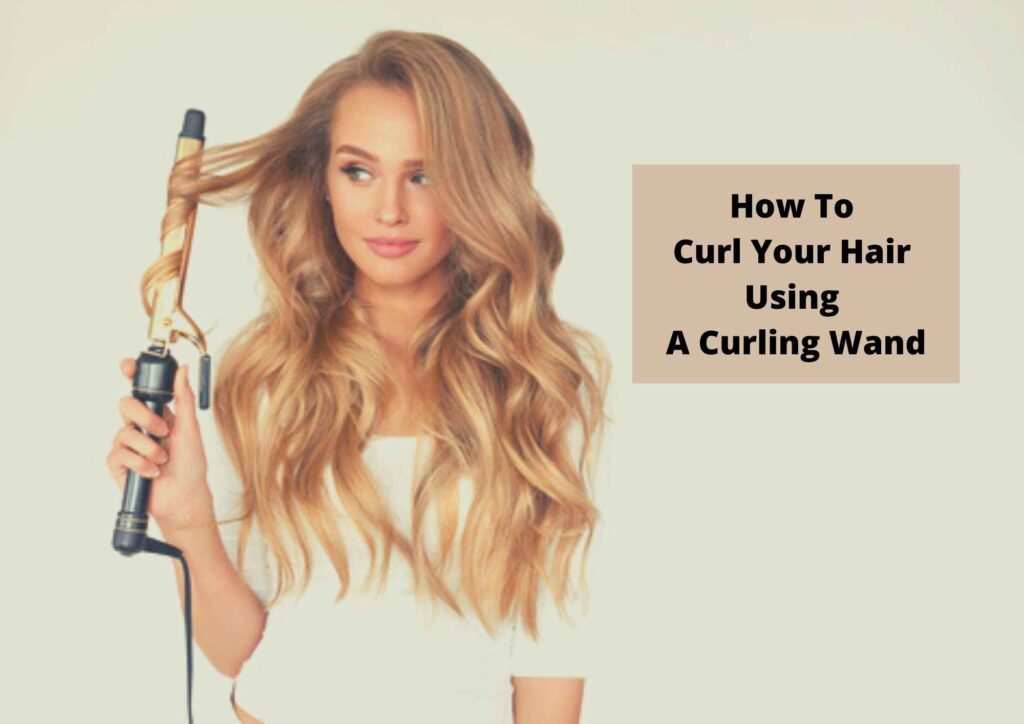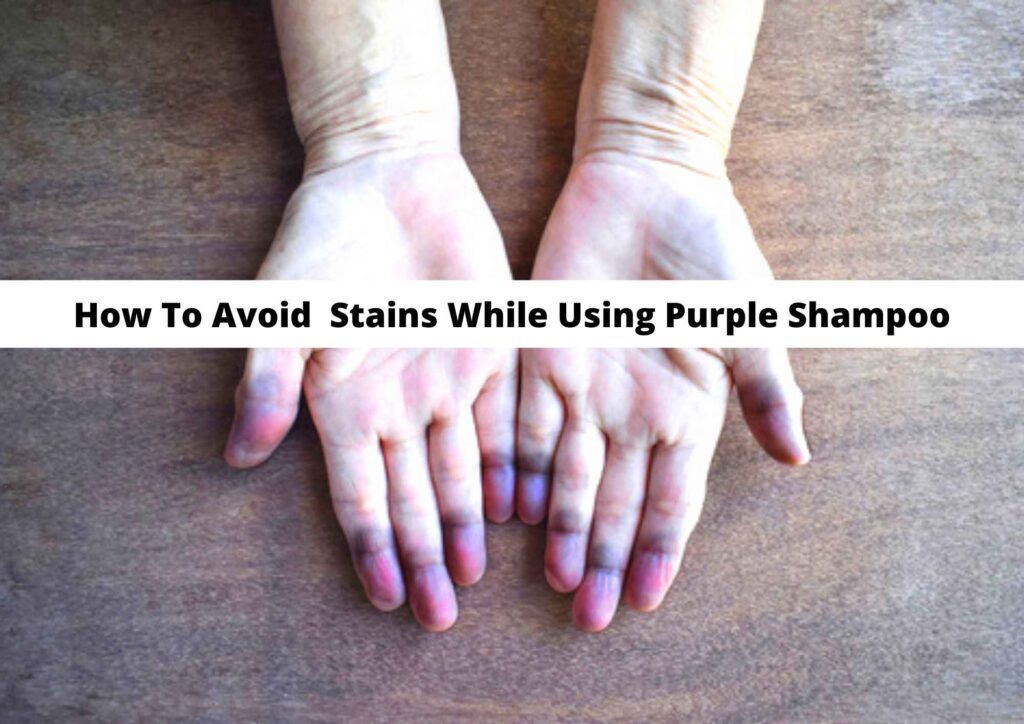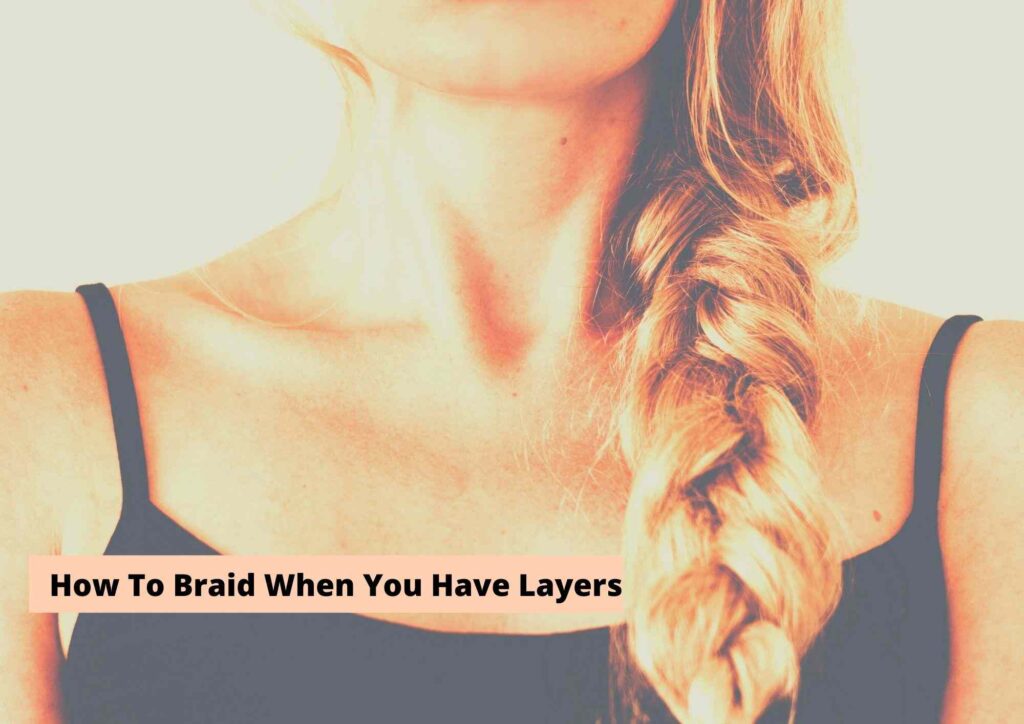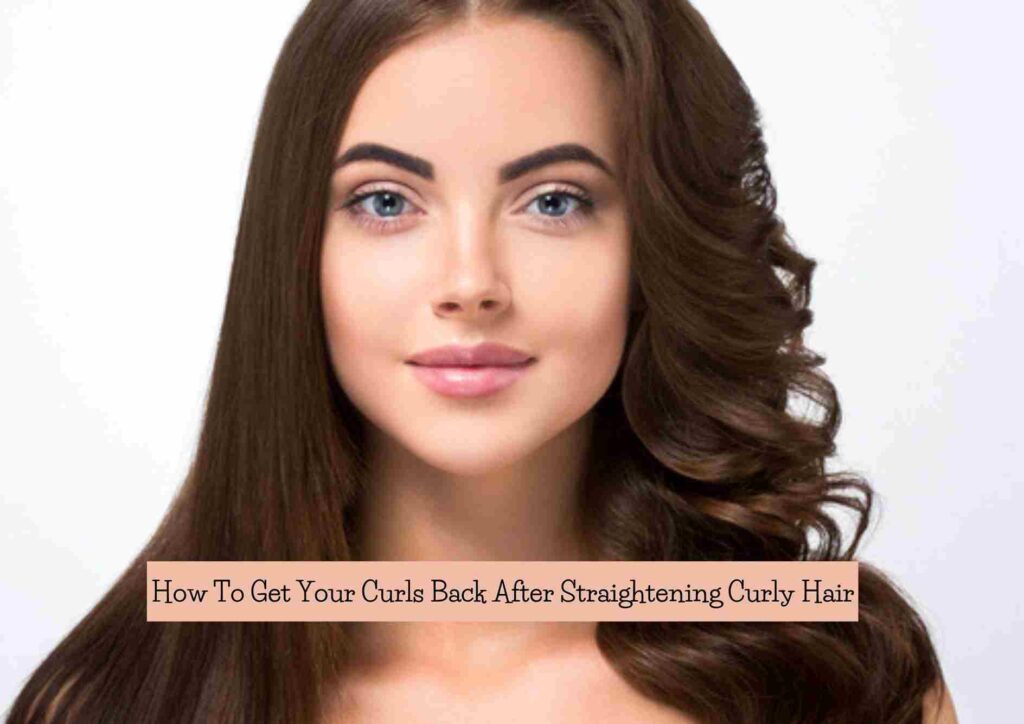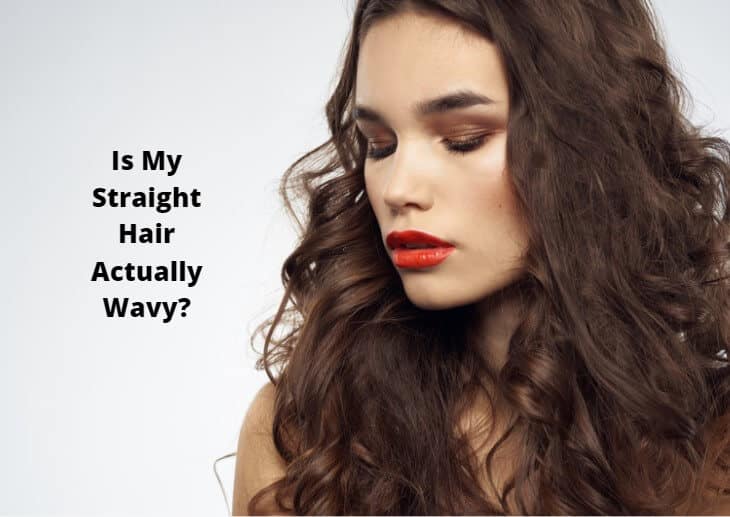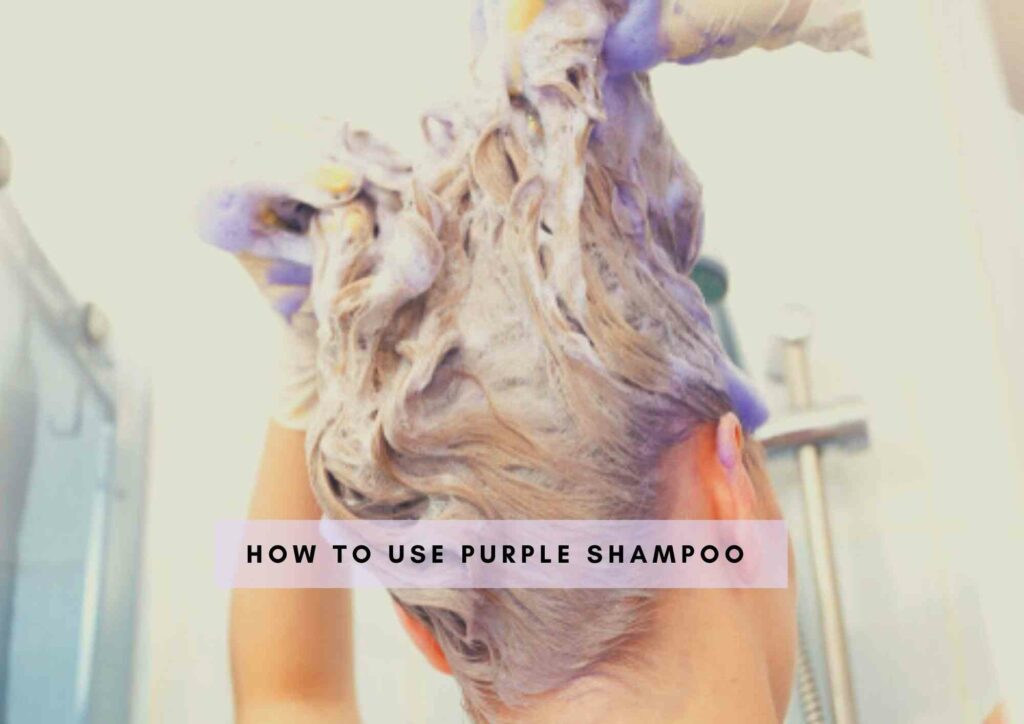Knowing your hair shape and texture is an important part of hair care. Here are a few tips that will help you determine these characteristics.
From straight to wavy to curly, everyone has a distinct shape and texture. But have you ever stopped and wondered how your hair shape and texture came to be?
Most of us use the term “genetics” loosely when we talk about the reason for the shape and texture of our hair. But there’s more than just genetics at play.
Hair is usually labelled as straight hair, wavy hair, or curly hair. However, there are other subtypes of hair based on shape and texture.
Hair can be categorised into 4 main types based on its texture and shape. There’s type 1 hair which is straight, type 2 hair is wavy, type 3 hair is curly, and type 4 hair is kinky or coily.
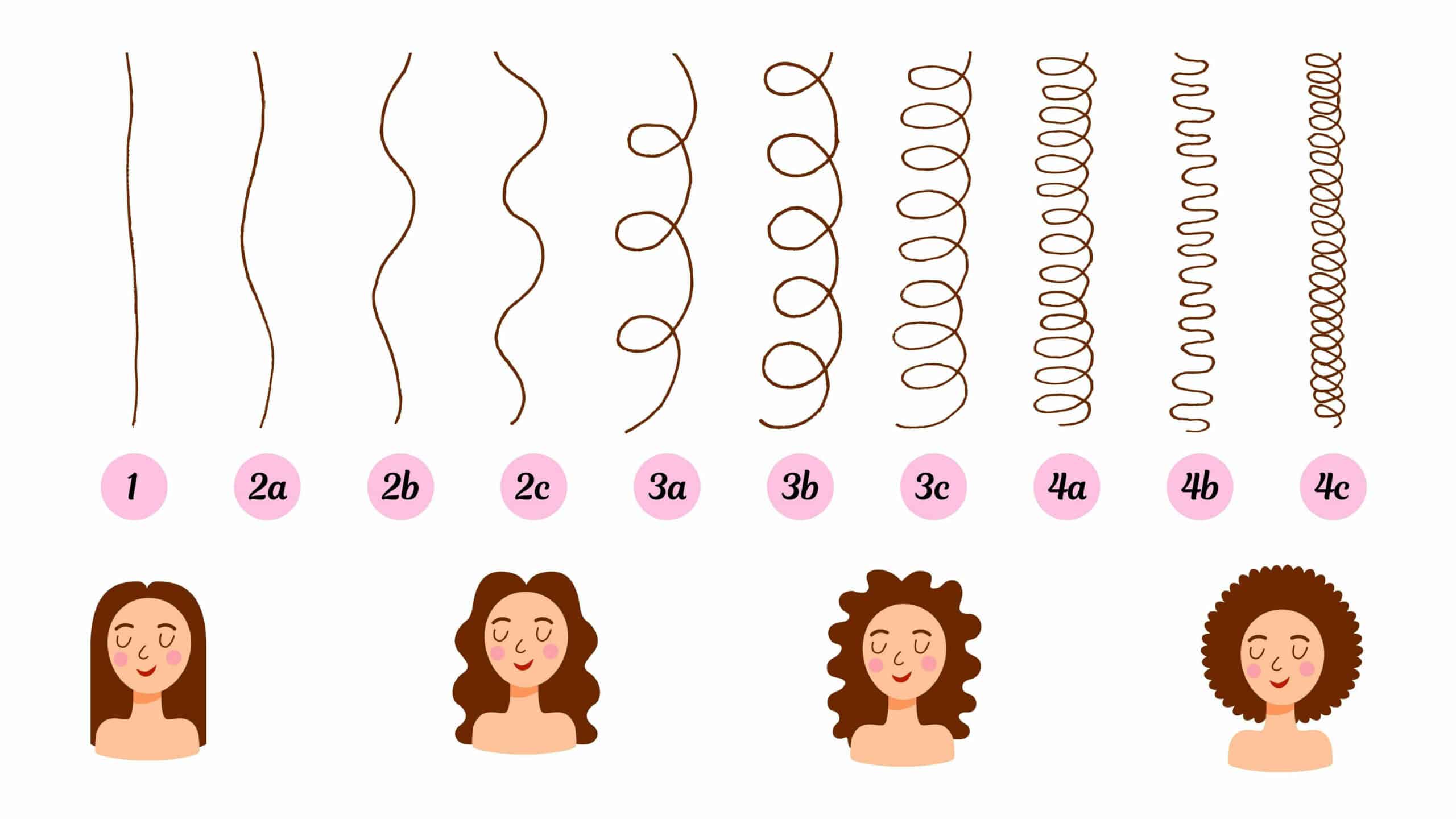
If this wasn’t complex enough, these types are further divided into types a, b, and c depending upon your hair’s density, porosity, curl pattern, width, and length.
These factors often go unnoticed but they play a vital role in how your hair gets its shape and texture.
What Determines Hair Shape And Texture?
What Appears To Affect Hair Shape And Texture?
When people talk about hair texture, they are usually referring to the natural shape of the hair or the pattern that your hair strands naturally possess.
If you’re unsure of what your natural hair texture is, let your hair air dry after a wash and don’t use any product. The shape that your hair dries in will tell you what kind of hair you have.
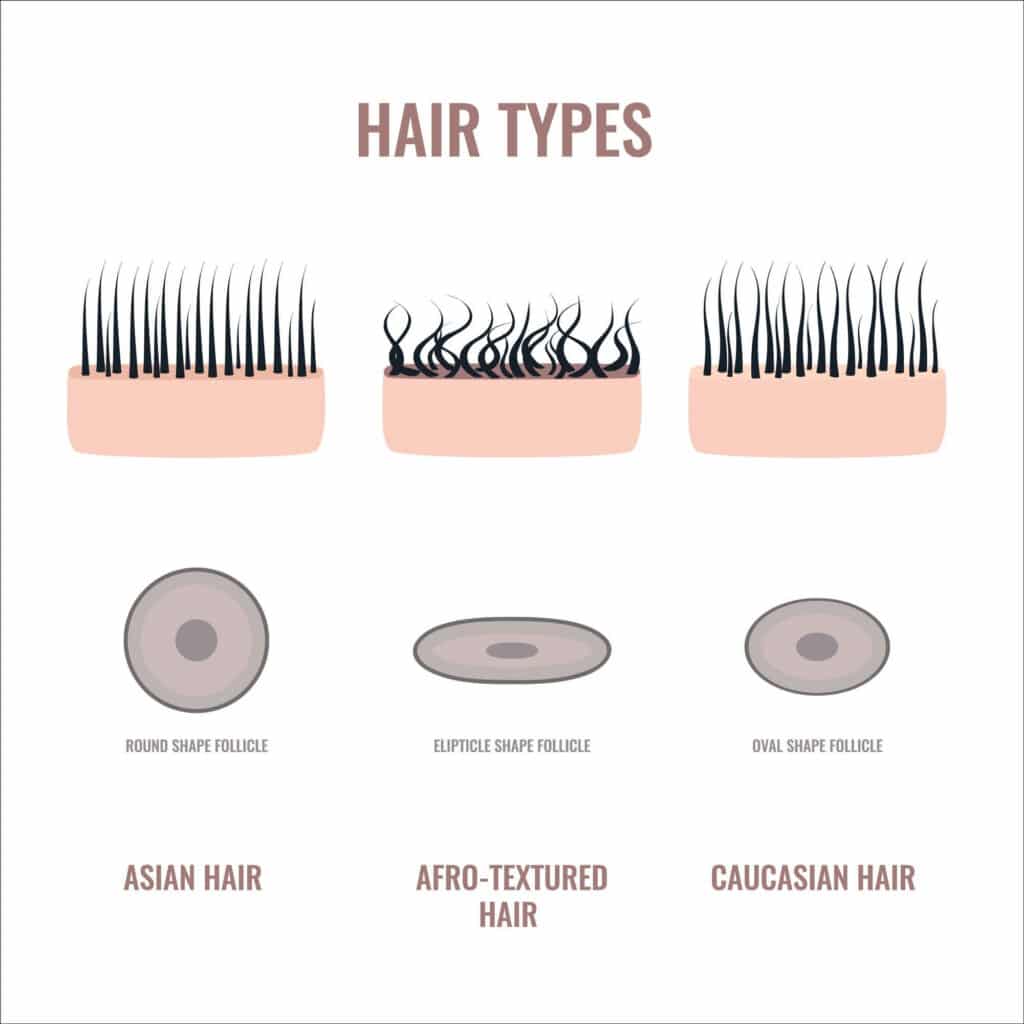
If it’s straight and doesn’t bend or curl, you have straight hair (type 1). If you notice subtle curves or an ‘S’ shape, you have naturally wavy hair (type 2).
If you see prominent loops or loose curls, you have naturally curly hair (type 3). If it dries with tight corkscrew ringlets, then you have coily hair (type 4).
There are a lot of factors that are at work when it comes to your hair shape and texture. Here are some of the most common factors:
- Genetics
Genetics is perhaps the biggest contributor to hair shape and hair texture. Plenty of research has been done on this topic and all have concluded that the shape and texture of hair are inherited.
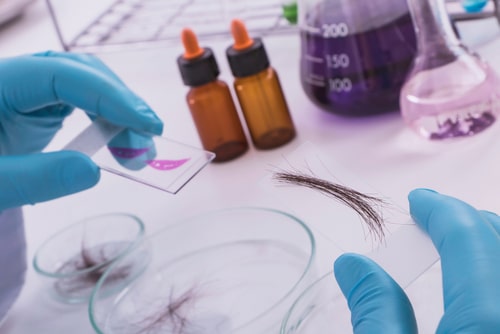
Now, that doesn’t mean that if both your parents have curly hair you can’t have straight hair. The gene variations travel through generations and are inherited. So in this case, you could have got your straight hair from a great-great grandparent.
Genes interact with other genes to create a particular hair texture. An example of this is when a person with curly hair has a child with straight hair, the child could have wavy hair.
Here, the child inherits genes from both parents. This also explains how people belonging to the same family may have different hair shapes and textures.
While talking about genetics I think it’s also important to mention ethnic backgrounds. Genes that are carried through generations belonging to a particular ethnic background greatly influence hair shape, texture, and thickness.
In certain genetic syndromes, hair texture is noticeably unusual. In such cases, the gene variants that are responsible for the syndrome are also involved in hair texture, shape, and stability.
While considerable research has been done on how genes affect hair shape and structure, we still haven’t fully understood all the genes that play a role in hair texture and how they do it.
- Hormones
Okay I know I said that genes play the most important role in determining your hair texture and shape. But, hormones play an almost equally important role.
Hormones have the magical ability to turn genes on and off. No, I don’t mean like a light switch. I mean that hormones can influence if a gene is expressed or not.
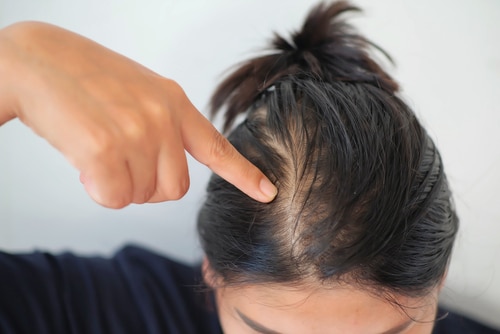
Our body uses hormones to send signals to different parts of the body. Hormones levels tend to change as we age, especially around puberty.
One example of how hormones affect your hair is seen during pregnancy. Many women have noticed that their hair looked healthier and thicker during their pregnancy.
Some research suggests that this could be the effect of increased levels of the hormones estrogen and progesterone during pregnancy.
- Environment and weather
Have you ever noticed how humidity makes your hair curly or wavy and dry weather like winters makes your hair dry and frizzy? This is because of the physical properties of your hair, which is mostly because of your genetics.
Humid air is packed with water molecules and these molecules carry a slight positive charge and a slight negative charge. These water molecules are almost like tiny magnets and so are the proteins present in your hair.

So when you’re walking around in a humid environment, these “tiny magnets” surround your hair and it is pulled from every direction. This can give hair a curly or wavy effect.
- Other factors
Besides these aforementioned factors, hair shape and texture are also affected by your age. As you grow older, you may notice that your hair changes.
Your luscious and glossy locks may not look as healthy as they did in the prime of your youth.
This is because, with age, hair becomes finer, rougher, and drier. The glands that are present in your scalp also shrink. So the amount of natural oils that they produce may also be reduced.
Of course, hormones are at play here as well. Like I said before, your hormones are constantly changing and this affects your hair as well. You will notice changes in your hair texture.
Hair styling and hair treatments (especially those that involve chemicals) also alter hair texture and shape.
Treatments that include the use of bleach, hair dye, styling tools, etc. can permanently alter hair texture.
Can You Change Your Hair Type (Shape And Texture)?
I’m guilty of constantly wanting to change my hair. Now let’s be realistic. We can’t change our genetics. But that doesn’t stop us from wanting to change our natural hair from time to time.
Here are some long-lasting treatments that you can use to change your hair shape and structure:
- Permanent straightening or perming
These treatments work by altering the protein bonds in the hair. These are chemical treatments and their effect can last for many years, depending on what type of chemicals are used and the aftercare.
These treatments should be professionally done as they involve chemicals and require a proper technique. So you can imagine how this can go horribly wrong if done by an amateur.
Aftercare is of utmost importance with these treatments. How you maintain your hair post-treatment decides how long the effects last.
- Semi-permanent straightening
If you want something that doesn’t have such long-term effects, you can opt for semi-permanent methods like a Brazillian blowout or a keratin hair treatment.
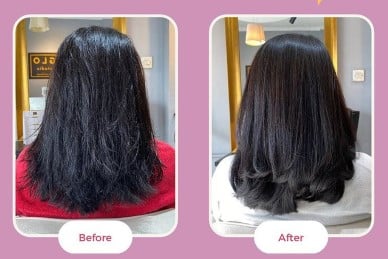
With these methods, effects last for about three to six months. Again, this depends on how well you maintain your hair after the procedure.
- DIY chemical kits
The above methods are done at a salon and can be quite heavy on the pocket. So here’s something you can try at home- chemical kits.
There are several brands that sell chemical kits that you can use to curl or straighten your hair at home. The results usually last for a few months, but some can last longer.
Of course, these come with their own set of risks. For one thing, you’re going to be working with chemicals that could cause significant damage if they aren’t handled properly.
It is always advised to read the instructions properly before using any of these kits.
In case you’re looking for temporary solutions that can change according to your fancy, you can use a method where results last until the next time you wash your hair. Here are a few temporary methods for you to try:
- Hair products
Products like leave-in conditioners, hair serums, hairsprays, and shampoos can be used to change your hair. They can be used to reduce frizz and give your hair a straighter or curlier appearance.
Some people have used products meant for curly and coily hair on their straight or wavy hair and have been able to achieve subtle curls.
It’s important to ensure that you use good quality products so that they don’t damage your hair. I find it helpful to read reviews of products before adding them to my hair care routine.
- Blow drying and other hair styling tools
Blow drying is probably the oldest trick in the book. For ages, people have relied on blow dryers to straighten their waves and curls and it has proved to be a much more cost-effective and healthier option for hair as there are minimal or no chemicals involved.
It takes a few rounds of practice but with a round or flat brush in one hand and a blow dryer in the other, you can achieve runway-ready hair.
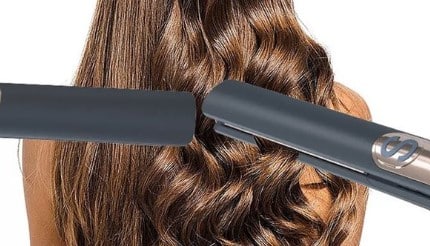
Other hair styling tools like straighteners and curlers use heat to set hair. These tools are easy to use and so quick!
Just remember to use a good heat protectant to protect your hair from any damage that can occur due to prolonged exposure to heat.
- Use of essential oils
In case you have rough and dry hair, using natural oils like coconut oil, almond oil, or a combination of natural oils can help your hair texture improve.
Oiling hair is an age-old tradition that has been passed down from generation to generation. It helps to hydrate your scalp and hair and provides nourishment. It also makes hair more manageable and easy to style.
You can massage oil into your hair and leave it for at least half an hour. Wash your hair as usual with shampoo and conditioner. Doing this just once or twice a week can work wonders on your hair.
Final thoughts
Whether curly or straight, your genes are a major contributor to your hair shape and texture. Besides that, your hormones and environment also have some say in this matter.
While we’re always looking for a change, we have to accept that we don’t control the genes passed on to us.
But with the right products, treatments, and hair care, we can change the way our hair looks.

